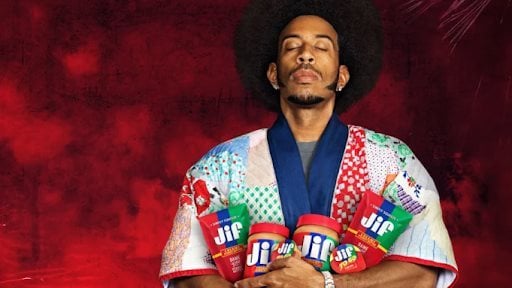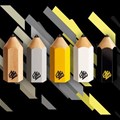#TheSocialAshTag: D&AD PR category trends for 2022

Stripped to its bones, traditional PR is all about managing relationships—the relationships between a company and the media or between a company and its target market. Similarly, social media is all about connecting one user or company to another user or company.
Here’s a look at the top five social media marketing trends I spotted across the entries in the PR category:
Gaming
We saw massive growth in gaming in 2020 with people seeking alternate forms of entertainment during the pandemic and this year is no different. A 2022 report shows that South Africa is by far the continent's largest gaming market with 40% of its population playing, followed by Ghana and Nigeria.
The entries this year showed an understanding of gaming culture like we’ve never seen before. The strategic partnerships between unsuspecting brands tapping into gaming shows a unique understanding of this audience and its cultural norms.
A top entry that showcases this trend was by the Kiyan Prince Foundation. Kiyan Prince was a promising young footballer who was stabbed to death when trying to break up a fight. Using deep fake technology, Kiyan’s powerful story was told 15 years later through the medium of gaming, influence networks and sponsorship as part of an anti-knife crime awareness campaign where Kiyan was added to Fifa21 as a new player and the first-ever virtual player in EA Sports history.
Hacking
Getting visibility and recognition on social media is a top priority for businesses. Unfortunately, a big part of that success depends on the ever-changing algorithms of each platform. These algorithms are our new decision-makers, and it looks like this year’s trend in social was to hack it.
The best entry to highlight this is Michelob’s "Save It, See It" campaign - essentially a way to hack the algorithm on Instagram. On Women's Equality Day, Michelob Ultra started a movement which called on users to hit ‘save’ on women athletes’ posts to give them more visibility. Because when they get more visibility, they get more opportunities. The Instagram algorithm prioritises saves over likes, shares, and comments so the more saves these posts get – the higher the content is ranked and the more chances it has to be seen. The spot puts it this way: "You don't have to like what we just said. Actually, don't 'like' it. 'Save' it."
Social commerce
Brands are finally starting to understand TikTok’s power in social commerce. Last year’s entries were focused on using TikTok for branded content for awareness, but this year saw brands expanding on community commerce moments and truly driving culture through listening. In February 2021, a TikTok user named Carly Joy posted a one-minute, f-bomb-laced, instructional video on how to shave your vagina using the eos (evolution of smooth) shave cream.
The video quickly hit 17 million views and led to a 25-times boost in orders to eos’s website. Eos’ chief marketing officer Soyoung Kang saw it happen in real-time and wanted to get in touch with Carly to figure out a way to collaborate, but there was just one problem—as a minor, Carly couldn’t receive messages on the platform from strangers.
Eventually, eos got her attention on TikTok through a duet of her video and within three days, eos had produced shave cream featuring Carly’s signature line, “Bless your f#@%ing cooch.” They didn’t just add a creator’s input into a campaign, they ran with a creator's idea all the way to the production line. This campaign shows that if brands are listening, brave and fast, they can tap into #TikTokMadeMeBuyIt in a new way and elevate it to drive both sales and culture.
Integrated influencer campaigns
The influencer campaigns entered this year weren’t just about getting a high-profile celebrity to share a post – these campaigns were built with the intended audience in mind and with an almost meta approach to the power of influencer marketing.
I haven’t stopped talking about this campaign since I’ve seen it and it really embodies this trend wholeheartedly.

In the past decade, a heated rivalry has emerged in rap culture – Old School vs New School. Part comedy, part cultural critique, and the other part endorsement deal – Jif partnered with Ludacris, an award-winning ATL rapper who hasn’t released new music in close to a decade. Coming out of retirement and jumping into the new school hip hop trend of “mumble rap” – Luda released a new track on Spotify that got the streets talking.
The two-minute commercial dropped, featuring Gunna and directed by award-winning music video director Dave Meyers, and showcased that Ludacris’ new flow is all thanks to Jif peanut butter. But this unique campaign has a rollout that is far greater than a commercial. In a bid to prove it’s not what you say but how you say it, Ludacris then issued the #JifRapChallenge, a chance to spit verse with Luda himself in a TikTok Duet. The brand and Ludacris also crafted two 37-carat diamond and ruby Jif jar necklaces, designed by hip-hop’s go-to jeweller, Icebox.
Goodvertising
The Lil Jif campaign also saw Jif donating to Ludacris' charity of choice, Boys and Girls Club. This golden thread of “goodvertising” ran through almost every campaign entry and showcases the major shift in advertising as a force for good.
Consumers, and not just Gen Z, are looking to make an impact with their purchases, and brands are seeking ways to appeal to this growing segment of their customer base. These types of campaigns have been on the rise for a few years, but they are especially relevant considering the social issues, environmental challenges, and awareness of health and wellness that the two years have left in its wake.
We often say we aren’t saving lives with our work but I’m looking forward to seeing more work that changes lives!























